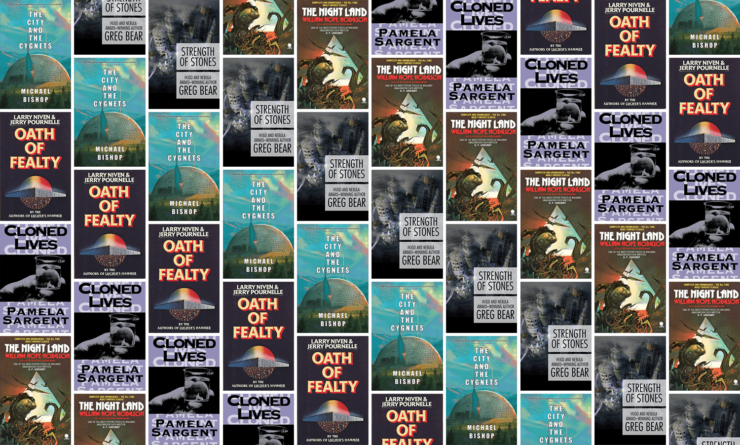The term arcology was coined by visionary architect Paolo Soleri in 1969, combining the words “architecture” and “ecology.” Arcologies were to be high-density, ecologically low-impact structures, with each one housing populations of thousands or more. Some architects envisioned arcologies that could be self-sustaining (or very nearly self-sustaining).
For many people, arcologies are a vision of a nigh-utopian mode of urban life. Pity, therefore, that nobody has ever managed to build one. Soleri’s Arcosanti, for example, broke ground half a century ago but never made Soleri’s vision reality, unless his vision centered around under-use and the occasional car-park fire. The issue may be that the technical challenges were greater than imagined half a century ago —or simply that at this moment, other approaches are far cheaper.
Science fiction authors are not limited by such mere practicalities. Thus, it’s not terribly surprising that arcologies and their kin appear from time to time in science fiction. Consider these five examples.
The Night Land by William Hope Hodgson (1912)
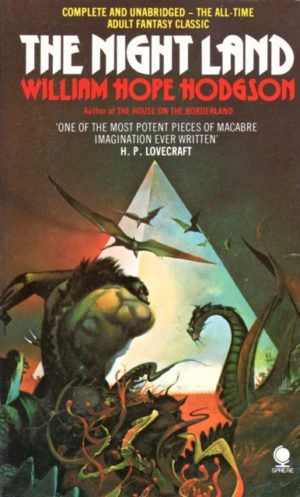
While Soleri coined the term arcology, the concept of a self-contained city was not original to Soleri. The Night Land is a notable early precursor to modern arcologies. The Last Redoubt houses within itself millions of people, providing everything required to sustain human life. Without the Last Redoubt, humanity would perish, for, just as Lord Kelvin foresaw, the energies generated by the Sun’s gravitational compression have run out and the sky is dark. To leave the Last Redoubt is to court unpleasant death.
The Lesser Redoubt was less fortunate than the Last Redoubt. Its Earth-Current (on which the vast city depended) failed, dooming all within. Despite which, some of its inhabitants appear to have survived… although perhaps not for much longer. Any attempt to reach the Lesser Redoubt is doomed by inclement conditions and the horrors that call the dark Earth home. Nevertheless, our hero is compelled to try, for he knows the latest reincarnation of the woman he loves is there. Rescue or death!
***
Cloned Lives by Pamela Sargent (1976)
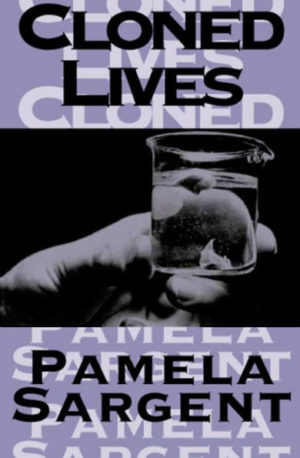
Although the Americans of the early twenty-first century might not realize it, the United States in which they live is an expression of the technological exuberance of the futurist visionaries of a third of a century before. Automated highways provide safe, computer-controlled transit, power is generated by fusion and space-based solar power stations, and—of course!—arcologies provide a sensible solution for housing millions of Americans. It would be utopia were it not inhabited by humans.
Amongst the array of new tools available to humans: cloning animals. For ethical reasons, cloning is for the most part not used on humans. Instead, extinct animals are provided with a second chance to be driven into extinction by humans. “For the most part” has an exception: Visionary researchers used the window of opportunity before the moratorium on human cloning to produce five clones: Edward, James, Michael, Kira, and Albert Swenson. It is through their eyes that we tour the exciting world of an America that never came to be.
***
Oath of Fealty by Larry Niven and Jerry Pournelle (1981)
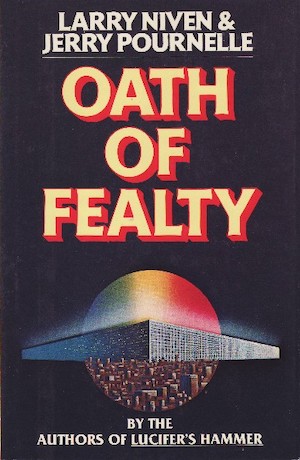
Sometimes, self-sufficiency is sold on its environmental merits. Todos Santos is not exactly self-sufficient, thus the mutually hostile relationship between the thousand-foot-tall city-building and the Los Angeles that surrounds it. If Todos Santos exemplifies any one concept, it is the gated community. In exchange for living in a panopticon state, those lucky enough to live within the vast building enjoy middle-class comfort untroubled by the unwashed masses who call the City of Angels home.
That’s the theory, anyway, but there is no plot in that. Among other things, Todos Santos is a giant target visible across Los Angeles, an affront to the undeserving poor and self-serving, blinkered politicians alike. Thus, the terrorism problem. It is a bold vision of the city-state of tomorrow, portrayed with all the sensitivity and insight readers of Niven and Pournelle’s Lucifer’s Hammer have come to expect.
***
Strength of Stones by Greg Bear (1981)
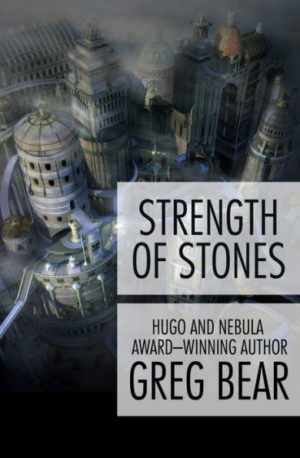
Rather than settle their new world willy-nilly, the hopefuls who migrated to the planet they dubbed God-Does-Battle decided to start with a clear vision made into manifest reality. They hired Robert Kahn, humanity’s greatest architect, to design perfect cities, which they then built. Utopia could only result!
To quote Sartre, “Hell is other people.” Utopias tend to fell apart as soon as humans are introduced. Kahn’s cities had a simple solution: They expelled all the humans, to survive or not, as fate decreed on, the surface of God-Does-Battle. The arcologies were now free to operate without human complications.
A thousand years later, Kahn’s creations are beginning to run down, which may give the starvelings outside a chance to reclaim their lost homes.
***
The City and the Cygnets by Michael Bishop (2019)
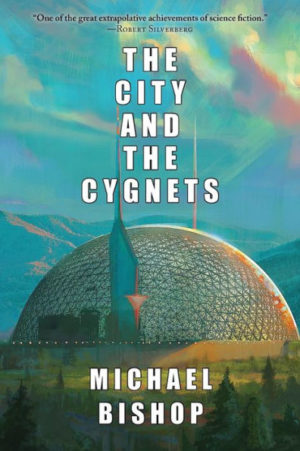
If one wants people who can really get under Americans’ skins, one can do no better than Americans’ traditional enemies: other Americans. Small wonder, therefore, that once it became technologically possible for cities like Atlanta to surround themselves with a dome offering a controlled environment and seclusion from their vexing co-nationals, they did just that. Across the United States, but especially in Atlanta, the Domes facilitated a great turning inward.
As this mosaic novel reveals, living in a closed social bubble affords great opportunity to determine just what it is one does not like about one’s neighbors. Despite the best efforts of a theocracy that proves less pleasing in reality than it probably seemed in imagination, some free spirits do their best to prevail despite repression.
Of course, Atlanta is not completely sealed off from the outside world. External events can and do affect it. The beginning of the end of the closed Urban Nucleus comes in the form of unlikely immigrants: beings from another world…
***
No doubt you have your own favourite SF arcologies, or perhaps you just want to suggest Oath of Fealty even though it is mentioned above. Comments are below. Have at it.
(Hat-tip to mbmikhael for the idea)
In the words of Wikipedia editor TexasAndroid, prolific book reviewer and perennial Darwin Award nominee James Davis Nicoll is of “questionable notability.” His work has appeared in Publishers Weekly and Romantic Times as well as on his own websites, James Nicoll Reviewsand the Aurora finalist Young People Read Old SFF (where he is assisted by editor Karen Lofstrom and web person Adrienne L. Travis). He is a four-time finalist for the Best Fan Writer Hugo Award and is surprisingly flammable.










